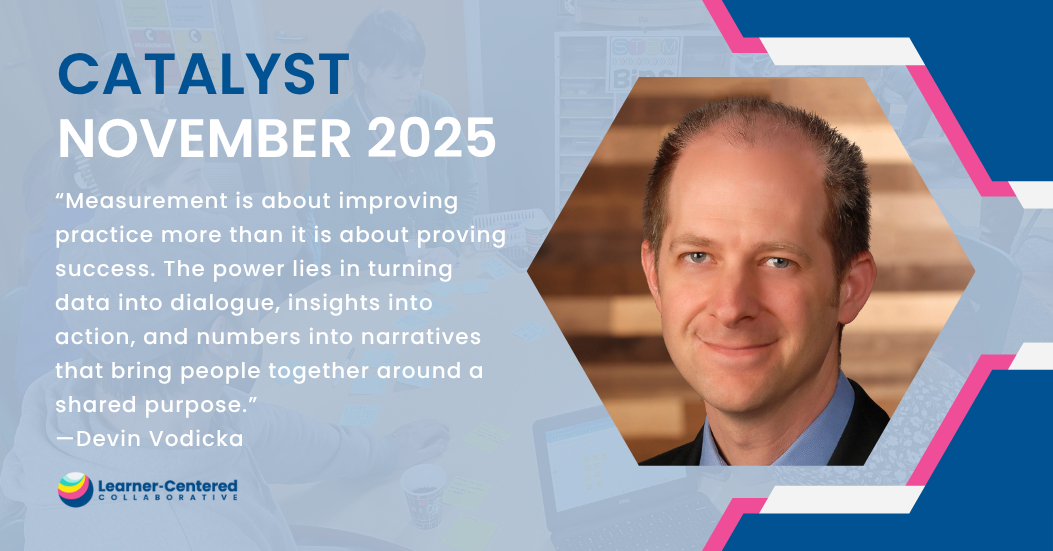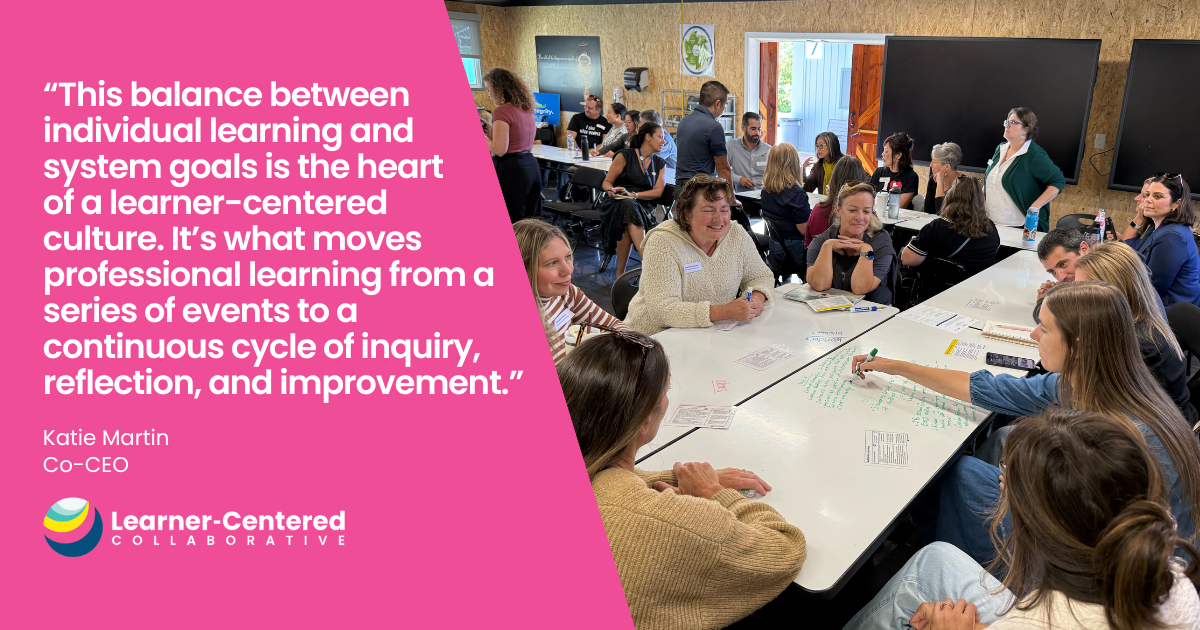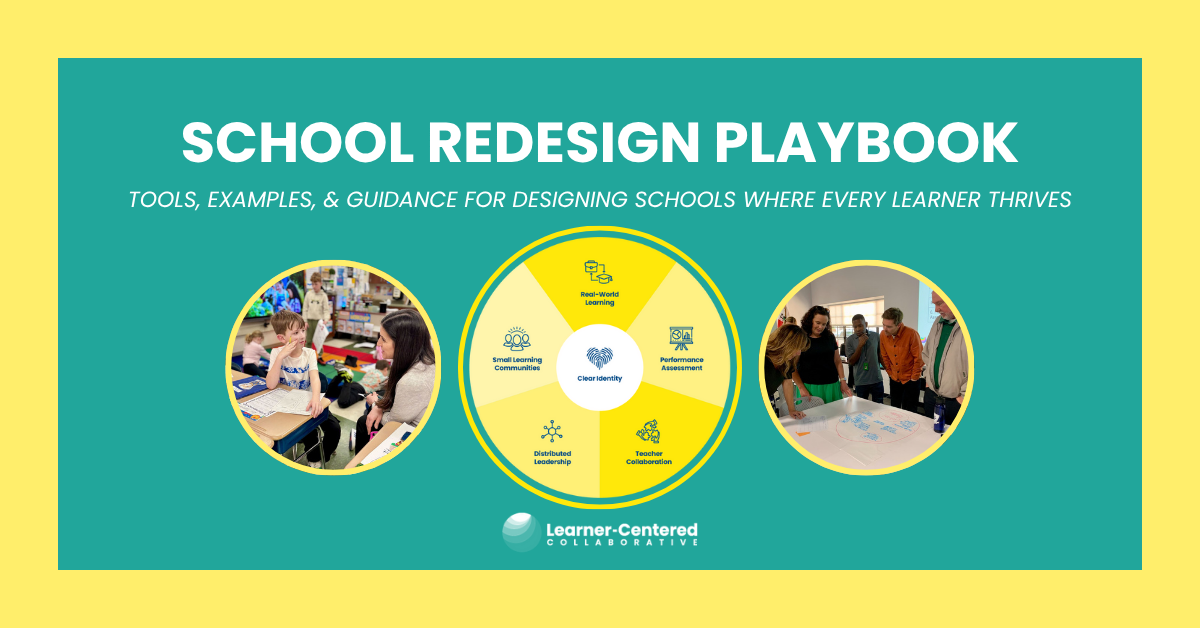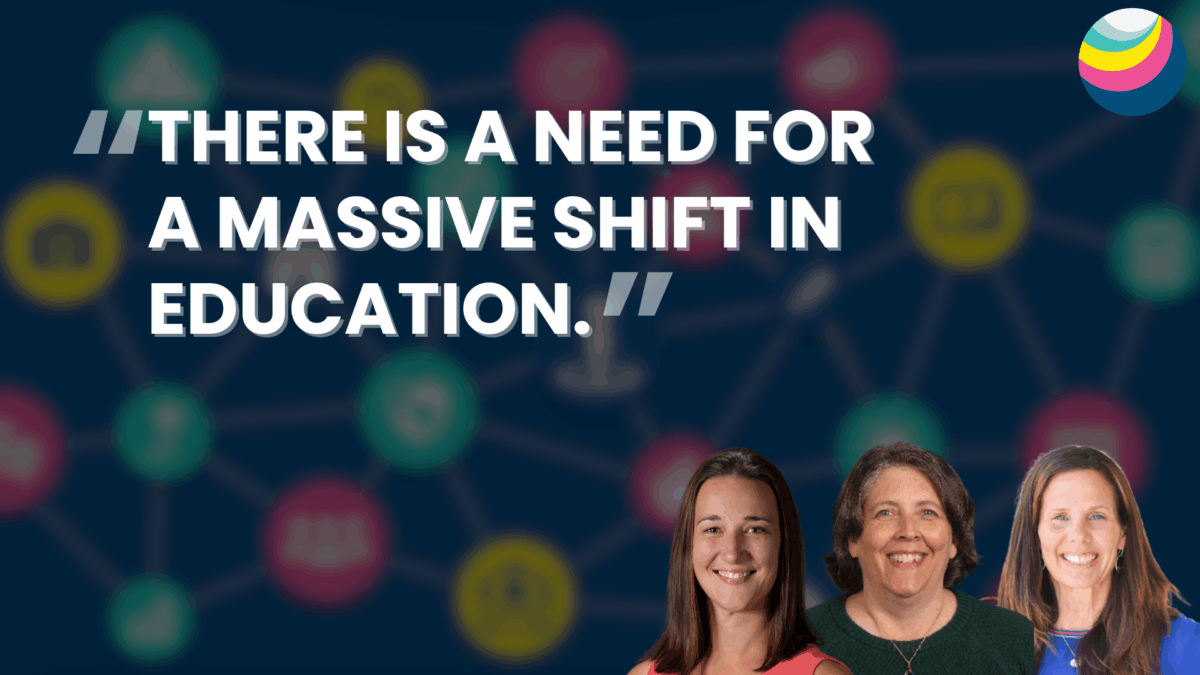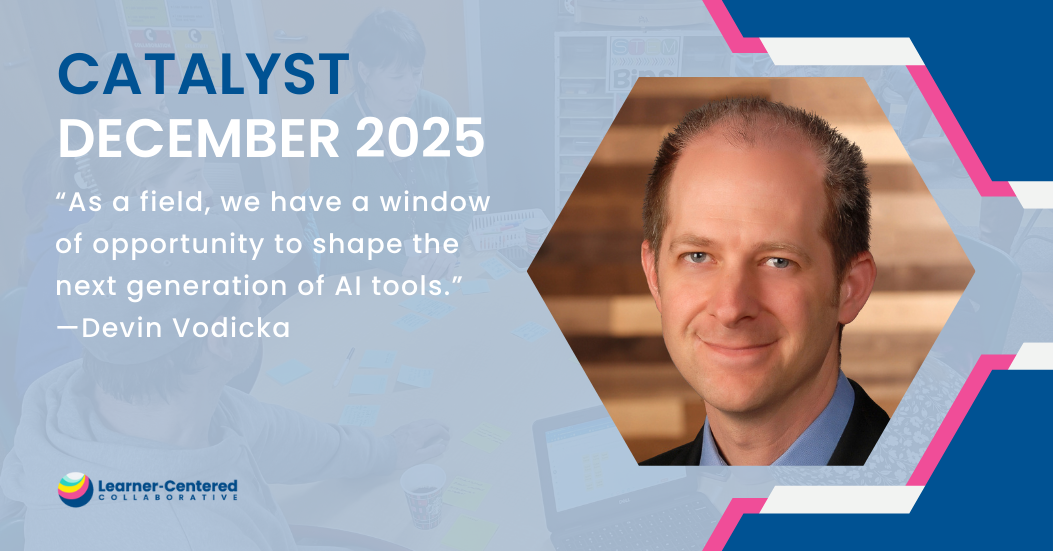The Impact of Innovation Cohorts: A Research-Based Perspective on Educator Growth
Written by Anna Yinqi Zhang, Ph.D. Candidate at Pennsylvania State University.
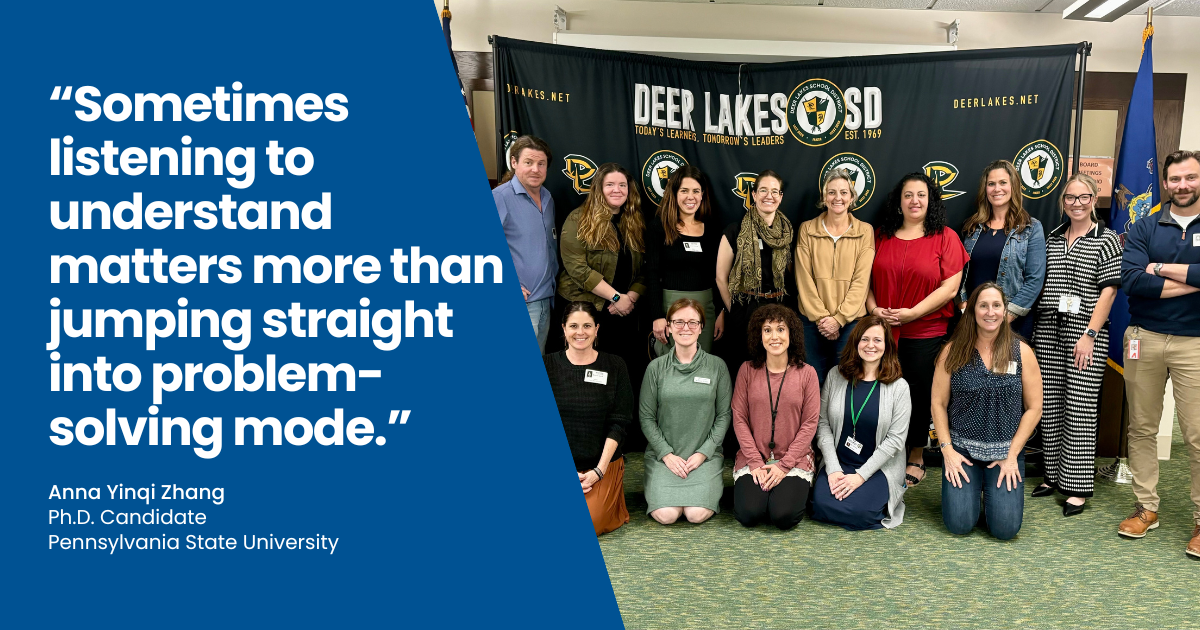
Through the inaugural Learner-Centered Assessment Fellowship, Digital Promise and Learner-Centered Collaborative brought together early-career scholars, education partners, and mentors to explore the potential of collaboration and culturally responsive approaches to educational assessment.
As a final reflection and celebration of their work, each of the four research fellows has authored a blog post for Learner-Centered Collaborative. Anna Yinqi Zhang (Ph.D. candidate at Pennsylvania State University) shares her analysis and reflections on the impact Innovation Cohorts have on educators’ confidence to apply learner-centered professional development learning to their classroom practice.
Since childhood, I’ve been drawn to working with non-profit organizations and contributing to their missions. Over the years, I’ve especially enjoyed working with pre-service and in-service educators, focusing on integrating STEM and robotics in early childhood education and exploring equitable AI tools in teaching and learning spaces.
For me, educational research and consulting are about advancing inclusive and accessible education for all, which made applying to be a 2024 Learner-Centered Assessment Fellow the perfect opportunity. Luckily, I was selected and had the opportunity to work with the Western Pennsylvania Innovation Cohort, a group of learner-centered educators across four Pennsylvania districts who collaborate together to share insights and challenges, and collectively improve their classroom practices.
Facilitated by Learner-Centered Collaborative’s Brittany Griffin, this Innovation Cohort came together in person three times throughout the 2023-24 academic year, met virtually as a Community of Practice three times, and individually selected three self-paced, online courses. Educators chose courses based on their self-identified growth areas and their chosen learning pathway.
This research project was exploratory and open-ended. We didn’t start with a specific research question or predetermined problem to solve. Instead, the process was centered around listening, asking thoughtful questions, and uncovering insights from the educators’ experiences in the Innovation Cohort. Sometimes, listening to understand matters more than jumping straight into problem-solving mode.
Read More: The Listening Leader: Striking the Balance Between Receptive and Expressive Communication
Discovering Two Major Themes Through Educator Surveys
To get a better understanding of the educator experience, the first half of the project focused on asking two primary questions:
- What were educators’ experiences like?
- What went well and what did not go so well?
To analyze their responses, I worked with multiple data types:
- Educators’ competency self-assessments (pre- and post-cohort)
- Meeting slides and discussion notes from in-person and virtual sessions
- Survey responses collected after each in-person session
- Post-cohort portfolios created by educators
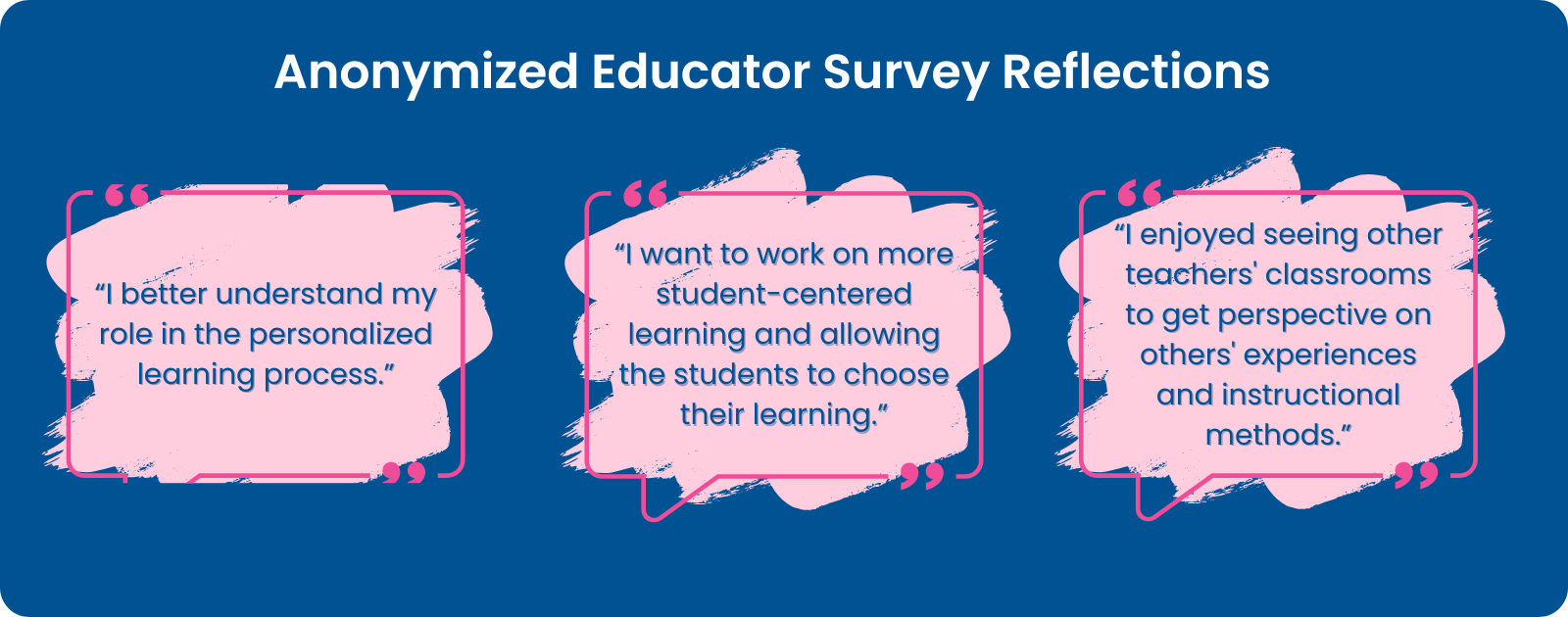
Real-life educational data is messy. After consulting with my mentor, I decided to conduct pragmatic, thematic open coding for the open-ended survey responses. This approach allowed me to explore and identify recurring and relevant ideas in educators’ survey responses. After the initial stage of open coding, we identified major themes presented in these responses. We found that, overall, educators’ experiences with the Innovation Cohort were positive, with a few suggestions and recommendations for improvement.
Two significant themes showed up in the survey data:
- In-person workshops allowed participants to understand and/or reflect on their roles in teaching and learning (e.g., personalized learning, learner-centered approach, having students co-create learning experiences, etc.).
- Educators appreciated the exposure to resources and ideas, including building personal connections with other cohort participants and listening to their insights and ideas.
Exploring How Educators Applied Their Learnings in Their Classrooms
After analyzing the survey data and reporting on my progress, we wanted to go a step further: How were cohort participants applying what they learned in their own classrooms? To address this question, I conducted:
- Descriptive data analysis—looking into data sources and describing the distributions and patterns of educators’ pre- to post-cohort competency self-assessment scores and survey scores.
- Data visualization using ggplot2
- Content/thematic analyses of educators’ portfolios.
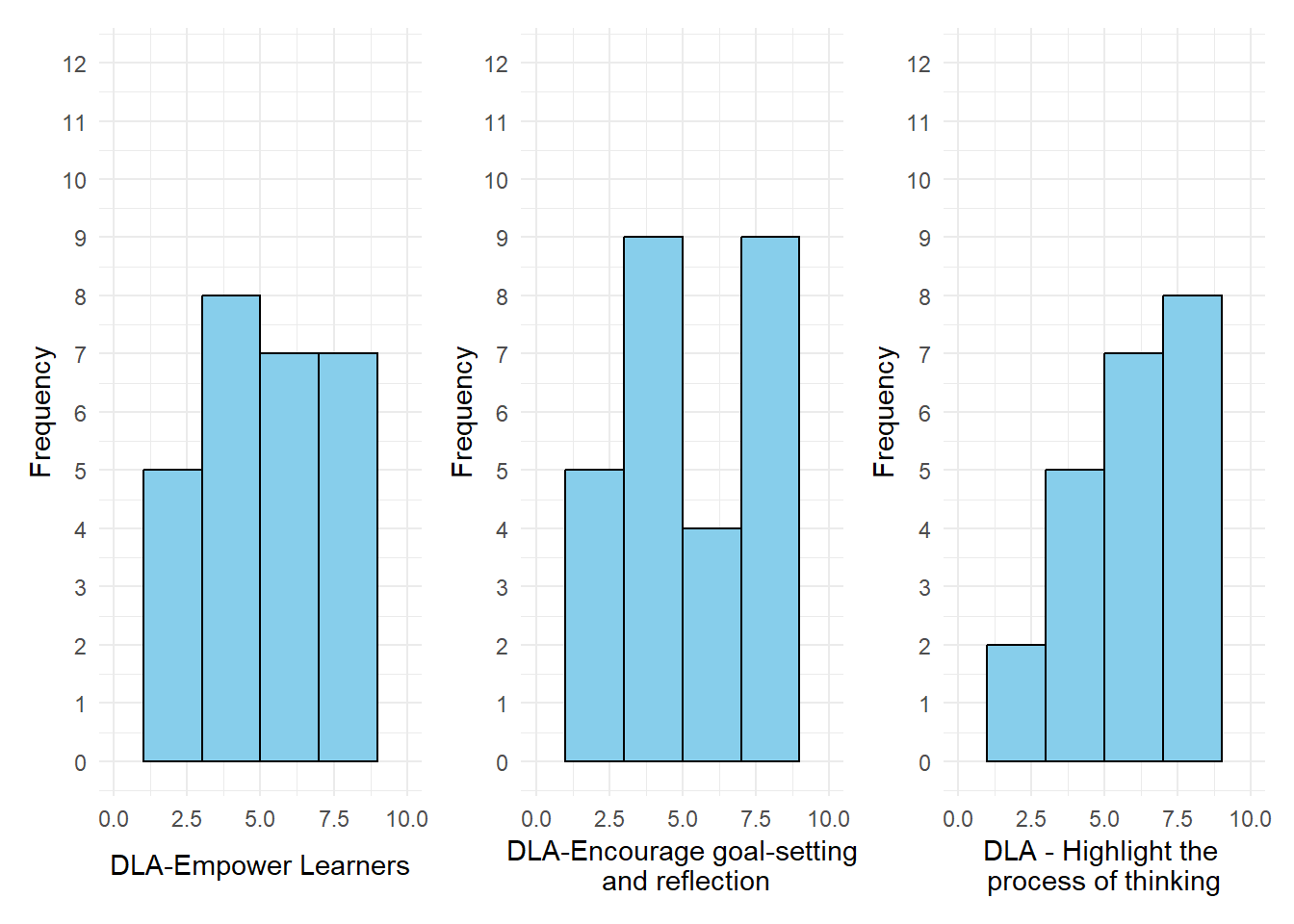

- Identified area of growth
- Self-selected learning pathways
- Portfolio highlights and notes
Throughout my research and analysis, I found myself learning alongside the educators (a humbling and empowering experience!). For example, one educator identified ‘Amplify Learner Voice’ as their area of growth, so they self-selected the Personalized Learning Pathway plus the Learner-Centered AI mini-course.
In the portfolio, the educator highlighted that they built competencies in the areas of leveraging technologies, amplifying student voices, and developing their learner agency. This specifically showed up in how they chose to redesign their Japan unit.

Example of a Choice Board created by a Western Pennsylvania Innovation Cohort participant.
Using Choice Boards, they encouraged their students to imagine themselves as designers, managers of recycling and waste management, and chefs (just to name a few examples). This allowed students to have choice and agency as they were introduced to topics like sustainability and cultural immersion. The educator also experimented with different generative AI tools to generate age-appropriate and creative book illustrations.
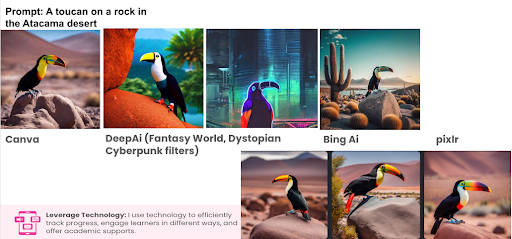
Example of AI illustrations created by a Western Pennsylvania Innovation Cohort participant.
Overall, the impact of these self-selected learning journeys was inspiring:
- 18 out of 20 educators who had portfolios available to review, successfully integrated what they learned in the cohort into their classrooms.
- The majority of educators reported feeling more confident in adopting learner-centered content and strategies from their learning pathways.
- Educators developed competencies in multiple areas, tailoring their learning journeys to their unique needs.
Creating Collaborative Professional Learning Spaces With and For Teachers
The Innovation Cohort is a collaborative space that allows educators to work with and learn from one another as well as shift their mindsets toward learner-centered practices.
Educators have access to strategies and tools to support personalized learning, which can lead to increased student engagement and potentially improved academic and non-academic outcomes. District leaders should consider prioritizing professional development programs that align with the specific needs of their educators and students (e.g. having educators identify their own areas of improvement and learning trajectories).
These professional learning experiences should be directly applicable to the classroom without putting undue burden on educators (e.g. in our case, educators have direct access to the teaching resource kit and are encouraged to make one change at a time), ultimately leading to positive changes in the school district. It is advisable to have holistic assessment and evaluation programs to understand educators’ experiences and the competencies they’ve gained from these professional development experiences.
Read More: Learning is a Process, Not an Event
Reflecting on a Unique Research Opportunity
Beyond the research itself, this project was an incredibly enriching experience. The support from colleagues, collaborators, and my mentor was amazing! They are knowledgeable, down-to-earth, and responsive.
Brittany Griffin, the Innovation Cohort lead from Learner-Centered Collaborative, and the data team were always available to help answer my questions. Chad Gotch, my faculty mentor, was attentive and caring and offered valuable feedback and guidance on the project. My mid-project check-in with Digital Promise helped me stay on track and complete my analysis within the expected timeline.
The flexibility of the project, working over the course of several months, gave me opportunities to look into the data multiple times from different angles to gain as full of a picture as possible of the Innovation Cohort experience.
Conducting research that is both exploratory and deeply connected to practice is powerful. Looking back at this project, it reaffirmed my future goal to work with non-profit organizations and/or in higher education. I am and will always be grateful for this experience with Digital Promise and Learner-Centered Collaborative! 😊
Are you an educator or school leader interested in deepening your learner-centered practices through collaboration and community? Learn more about creating or getting involved in a future Innovation Cohort here.
